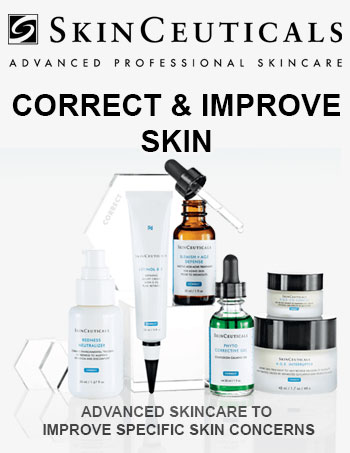What is Actinic Keratosis?
Also called solar keratosis
Actinic keratoses (AKs): AKs form on skin that soaks up lots of sun over the years. An actinic keratosis (ak-ti-nik ker-ah-TOE-sis), or AK, is a rough, dry, scaly patch or growth that forms on the skin.
An AK forms when the skin is badly damaged by ultraviolet (UV) rays from the sun or indoor tanning. Most people get more than one AK. When you have more than one AK, you have actinic keratoses, or AKs.
AKs are very common and one of the most frequent reasons for seeing a dermatologist.
Anyone who has many AKs should be under a dermatologist’s care. Most people who have many AKs continue to get new AKs for life. AKs are considered precancerous. Left untreated, AKs may turn into a type of skin cancer called squamous cell carcinoma.
By seeing a dermatologist for checkups, the AKs can be treated before they become skin cancer. If skin cancer does develop, it can be caught early when treatment often cures skin cancer.
Actinic keratosis: Signs and symptoms
Most people who get AKs do not have any symptoms. They only notice changes to their skin. Symptoms can occur. A few symptoms to watch for are:
- Rough-feeling patch on skin that cannot be seen.
- Rough patch or growth that feels painful when rubbed.
- Itching or burning.
- Lips feel constantly dry.
Actinic keratosis: Now you see it, now you don’t
An AK can come and go. An AK can appear on the skin, remain for months, and then flake off and disappear. The skin can suddenly feel smooth. Many AKs re-appear in a few days to a few weeks. They often re-appear when the person goes outdoors without sun protection.
Even if an AK does not re-appear, you should see your dermatologist. AKs form when the top layer of skin is badly damaged. You can get more AKs. If the damage grows deeper, skin cancer can develop.
Actinic keratosis: Who gets and causes
People who are most likely to get AKs have one or more of the following traits:
- Fair skin.
- Hair color is naturally blond or red.
- Eyes are naturally blue, green, or hazel.
- Skin freckles or burns when in the sun.
- 40 years of age or older.
- Weak immune system, which has many causes including:
- Organ transplant: The medicine that prevents rejection weakens the immune system.
- HIV/AIDS.
- Have a medical condition that makes the skin very sensitive to UV rays, such as:
- Albinism (albino).
- Xeroderma pigmentosum.
- Work with substances that contain polycyclic aromatic hydrocarbons (PAHs), such as coal or tar. Roofers have a higher risk of getting AKs because they work with tar and spend their days outdoors.
AKs usually appear after age 40. People who live in places that get intense sunlight all year, such as Florida and Southern California, may get AKs earlier. AKs also often appear much earlier in people who use tanning beds and sun lamps.
What causes AKs?
Ultraviolet (UV) rays cause AKs. Most people get exposed to UV rays from being outside during the day or using tanning beds.
You can prevent AKs by protecting your skin from the sun and never using tanning beds or sun lamps.
When UV rays hit our skin, the rays damage our skin. When we are young, the body can repair some of the damage. Over time, the damage accumulates, and the body is less able to repair itself. We eventually see UV-damaged skin. If UV rays continue to hit the skin, people get AKs.
Actinic keratosis: Diagnosis, treatment, and outcome
How do dermatologists diagnose actinic keratosis?
Dermatologists diagnose an actinic keratosis (AK) by closely examining the skin.
If your dermatologist finds a growth that is thick or looks like skin cancer during the exam, your dermatologist will likely perform a skin biopsy. Your dermatologist can safely perform a skin biopsy during an office visit.
When found early and treated, skin cancer is often cured.
How do dermatologists treat AKs?
There are many treatments for AKs. Some treatments your dermatologist can perform in the office. Other treatments you will use at home. The goal of treatment is to destroy the AKs. Some patients receive more than one type of treatment. Treatments for AKs include:
In-office procedures:
- Cryotherapy: Destroys visible AKs by freezing them. The treated skin often blisters and peels off within a few days to a few weeks. This is the most common treatment. When the skin heals, you may see a small white mark.
- Chemical peel: This is a medical chemical peel. You cannot get this peel at a salon or from a kit sold for at-home use. This strong peel destroys the top layers of skin. The treated area will be inflamed and sore, but healthy new skin will replace it.
- Curettage: Your dermatologist carefully removes a visible AK with an instrument called a curette. After curettage, your dermatologist may use electrosurgery to remove more damaged tissue. Electrosurgery cauterizes (burns) the skin. New healthier skin will appear.
- Photodynamic therapy (PDT): A solution is applied to make the skin more sensitive to light. After a few hours, the treated skin is exposed to a visible light, such as blue or laser light. The light activates the solution and destroys AKs. As the skin heals, new healthy skin appears.
- Laser resurfacing: Much like a chemical peel, a laser can remove the surface layer of the skin. This destroys AK cells. After treatment, the skin will be raw and sore. The skin heals within 1 or 2 weeks, revealing healthier new skin.
Prescription medicine:
Your dermatologist may prescribe a medicine that you can use at home to treat AKs. Medicines that dermatologists prescribe include:
- 5-fluorouracil (5-FU) cream: This is chemotherapy that you apply to the skin. It causes temporary redness and crusting. Patients typically apply 5-FU twice daily for 2 to 4 weeks. A person who has lots of damaged skin may need to use 5-FU longer. 5-FU causes sun-damaged areas to become raw and irritated. As the skin heals, healthy skin appears. Another treatment such as cryotherapy may be necessary to treat thick AKs.
- Diclofenac sodium gel: This is a non-greasy gel. You apply it to skin with lots of AKs. Patients apply the medicine twice a day for about 2 to 3 months. During this time, you must protect your skin from the sun. You will see the best results about 30 days after you stop applying the gel. Some AKs can remain. Your dermatologist will treat these, often with cryotherapy.
- Imiquimod cream: This cream helps boost your body’s immune system so that your body can get rid of the diseased skin cells. You will apply this cream to your skin as directed by your dermatologist. Most patients apply imiquimod for several weeks. Imiquimod causes the skin to redden and swell. After you stop using the medicine, the skin heals.
- Ingenol mebutate gel: This gel works in two ways. It boosts the body’s immune system. It also is a type of chemotherapy for the skin. One formula is used to treat AKs on the head and scalp and is applied for 3 days in a row. The other formula treats AKs on the legs, arms, and torso. Patients apply this formula for 2 days in a row. Both formulas can cause rapid redness and swelling. As the skin heals, the redness and swelling clear.
Is there a treatment for Actinic Keratosis?
Yes. Susong Dermatology offers a topical solution and light treatment called Levulan




